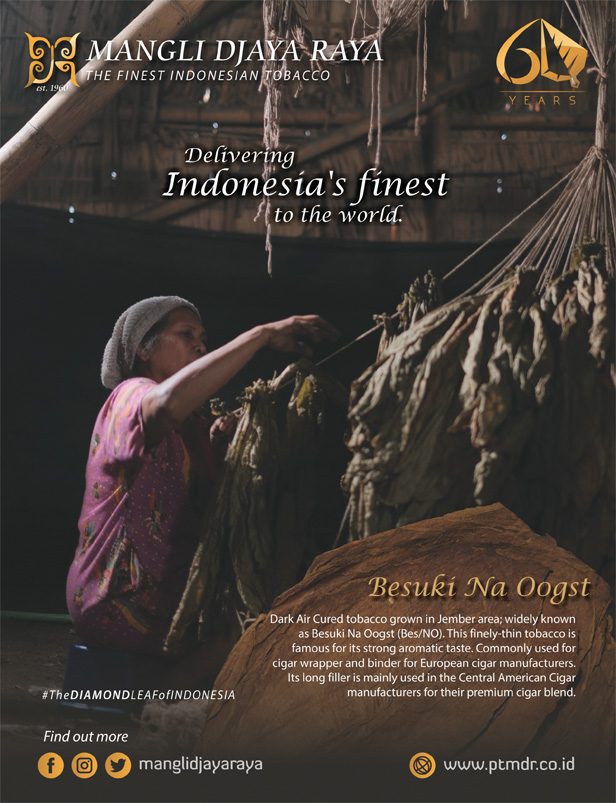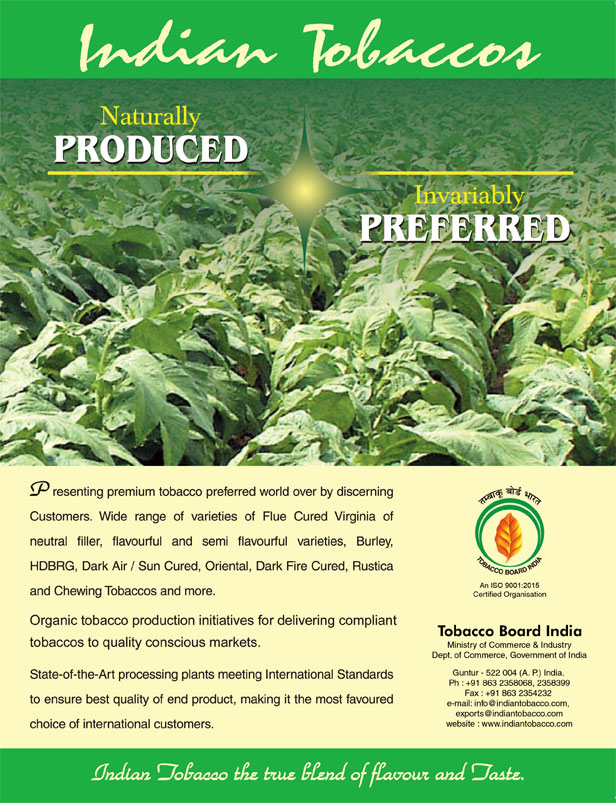
Packaging could help prevent issues such as EVALI by authenticating products and educating consumers.
By Timothy S. Donahue
Packaging is important. More than just a fancy box for holding goods, packaging is on the front lines of authenticating products and educating consumers on everything from quality and consistency to product use. Connected packaging (often called smart packaging), including active, interactive and intelligent packaging, can help prevent problems such as the recent outbreak of what has been called e-cigarette or vaping use-associated lung injury (EVALI), according to experts.

“Packaging is one of the few ways in which you can communicate to your end consumer. Now, look at vapor and other highly regulated categories—like combustible cigarettes—you cannot do social media. You can do very little advertising,” says Jacopo D’Alessandris, CEO of E-Alternative Solutions (EAS), a major U.S.-based vapor and CBD manufacturer and supplier. “With limited communication avenues, packaging becomes an even more important aspect of the interaction and the kind of connections needed between the brand and the end consumer.”
The U.S. Centers for Disease Control and Prevention (CDC) and the U.S. Food and Drug Administration (FDA) have labeled black market THC cartridges containing vitamin E acetate as the source for the EVALI outbreak. The tainted THC blend has been found not only in homemade and counterfeit name brand THC cartridges but also in “hacked” pods—products that have been broken open and filled with illicit THC liquid, according to media reports. These “fake pods sold in our name are a threat to public health and safety,” the chief financial officer of a company that fell victim to such practices was quoted as saying.

“Clearly, packaging is the main vehicle for brands to communicate advice, warnings and promotional messages at the point of use,” says Chris Crawley, manager of business development in the Americas for Parkside Flexibles, an international packaging company. “In the case of the EVALI situation, packaging can carry key messages around health and safety in [the] use and avoidance of counterfeit products to support consumers and avoid the problem in the future.”
Currently, there is little regulation in place for the packaging of marijuana and CBD products, notably at the U.S. federal level where THC remains illegal. However, the FDA requires companies that wish to remain on the market after its May 12 premarket tobacco product application (PMTA) deadline to meet certain packaging standards.
“Packaging is a major part of the testing aspects of the PMTA,” explains D’Alessandris. “When we do our PMTAs, we want to make sure that the product doesn’t appeal to kids, to youth; we want consumers to know the product is authentic; and after people open the box, we want them to know how to use it. These are critical components that the FDA looks at from a behavioral standpoint.”
One example of active packaging is the quick response (QR) code. Customers scan the code with their phones to bring up information about the product. Active packaging was one of the earliest forms of connected packaging. This technology is easy to use, and most consumers understand how QR and traditional bar codes work.
D’Alessandris says that active packaging allows consumers to see required information prior to the point of sale, and QR codes can direct consumers to larger quantities of data that don’t fit on a standard sized package. Using QR codes allows the purchaser to be well informed and ensures the manufacturer is meeting all requirements.
“The QR code allows us to give the most information on a limited amount of space,” says D’Alessandris. “Using a QR code allows the consumer to know that the product is in fact what it says it is on the packaging. You can scan it, and you can see that the CBD levels, for example, are what they say they are on the box. Plus, we need to let consumers know that the level of THC is below the 0.3 percent threshold. That is legally required on a federal level. That information is also available for each batch, and you can find the information by scanning the QR code.”
However, the QR code can also be a source of fraud. There are several ways consumers can protect themselves, according to Crawley. “The QR reader app should always be downloaded from a reputable source. Where possible, the QR code should be checked that it has not been tampered with, e.g., a sticker over the code,” he says. “Customers should never enter personal or financial information into a website that they have been directed to, and if downloading security software, they should choose a smartphone or tablet that has a built-in QR code scanner to avoid problems.”
Some companies are incorporating more advanced technologies into their packaging to better connect with consumers. Interactive and intelligent packaging can collect information on consumer habits, behavior and other data. These can also include Bluetooth technology to send a text message when a battery is low and radio frequency identification technology (RFID) to potentially track vapor devices, including pods, even if it leaves the state it has been sold in, according to Crawley. RFID can also include buyer information, such as age, when captured at sale.
Interactive and intelligent packaging interacts directly with customers, allowing them to make informed decisions, according to D’Alessandris. These forms of packaging can also add another layer of protection against counterfeit products. Other tools for consumers to check product authenticity are holograms, lot codes and serial numbers. Holographic packaging makes the product stand out on the shelf and is hard to copy. Lot codes identify when and where a product was manufactured. They are mostly used for quality control and tracing purposes in manufacturing. Serial numbers, however, are one of the best ways to ensure a product is legitimate, says D’Alessandris.
“By using a serial number, you can do two things,” he explains. “One, of course, if there’s an issue with the product, there’s a recall. You can go and extract exactly that product and say, ‘Hey. There might be a problem with that batch. Let’s pull it out of the store so that there’s no risk.’ The serial number can tell you much more than a lot code. It can tell you the day it was made, what machine did it, and you can go back and see the liquid that was used. You can then trace it back to all the different components that were used in its production. So, if there’s an issue—which we’ve fortunately never had—you can always go back and isolate that batch and deal with it without risk for the consumer.”
Identifying information (e.g., a lot number or serial number) is placed on the packaging and often etched onto the product itself, such as with the Leap pods used with EAS’ Leap Vapor products. Etching is expensive, which makes it nearly impossible for a counterfeiter to mimic, according to D’Alessandris. It can also be used to interact with the consumer on a more personal level.
“Counterfeiters just don’t do it, and if they did, it would look different because they don’t have the same etching machine or the laser machine,” says D’Alessandris. “So, I think it helps in that regard. Plus there’s some regulatory, responsible things to do concerning traceability in your products. It’s a big differentiator, so we’re pretty proud of the fact that we have this. There’s also a double benefit for the consumer. They know that the product has been serialized, which means it’s uniquely done. We know it’s a legitimate product. Second, we just launched this rewards system. So, you can actually use this number to enter into a loyalty program. And then we know who you are and where you bought the product. And then we can engage with you on a consistent basis to reward you for your loyalty.”
Despite the current lack of rules, regulation for the CBD and marijuana industries is coming. California Governor Gavin Newsom signed an executive order in September 2019 mandating additional warning signs for vapor product packaging and retail displays. It also includes enforcement of regulations against selling counterfeit products. In Massachusetts, regulators are requiring that cannabis brands disclose all components in vapor cartridges sold at retail. In Oregon, licensed dispensaries are being asked to read labels on vapor products themselves. If the labels “lack clarity,” retailers are required to ask manufacturers to provide additional information.
EAS is using the various packaging options to create a database. The database can be used to better serve customers as well as provide information for future regulatory requirements. For example, the FDA requires post-market surveillance for any product it gives a marketing authorization.
“We’re going to use it for a lot of things. We will use it for our rewards program and other consumer options. But more importantly for us and [the] FDA, we’re going to use these packaging options (and actual user data) in our post-market surveillance activities. And because we’re building a database early, we’re going to have a nice, robust group of people that we can always go to and continue to evaluate the likelihood of things like youth exposure,” says D’Alessandris. “Packaging is a great way to access an information highway. We’re getting what we need. The consumers are getting what they need. Packaging gives us the ability to do so many things.”














